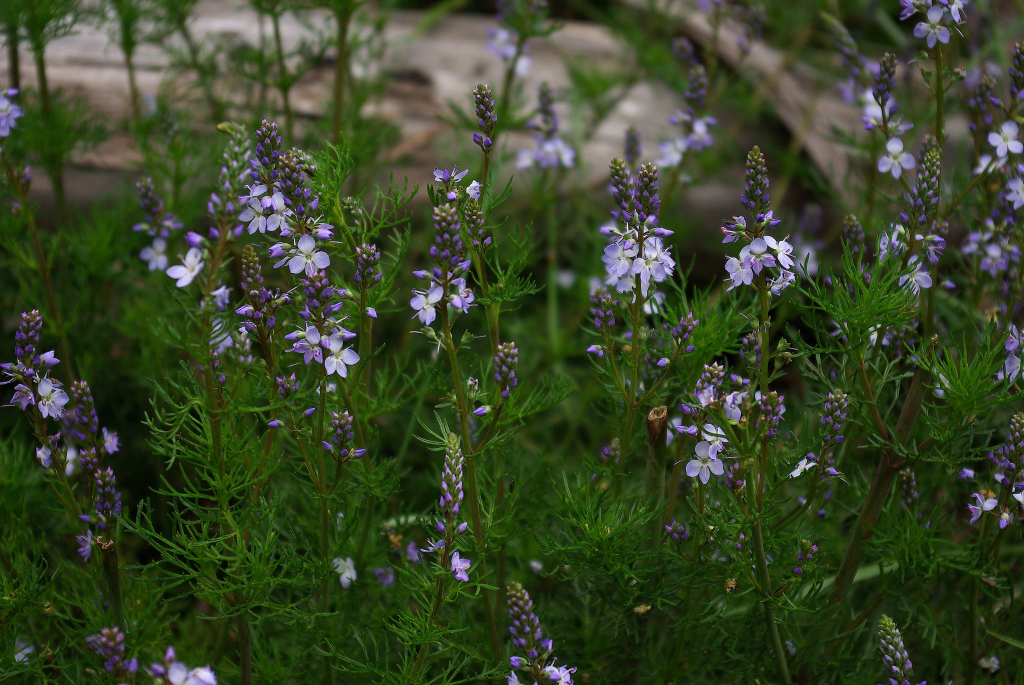Veronica nivea
Lindl.Softly woody shrub; stems erect or ascending, 15–50 cm long, often appearing unbranched but most nodes bearing very short lateral branches with compact clusters of leaves, stems usually dying back to base after fruiting, internodes with sparse curved or twisted hairs in longitudinal bands. Leaves usually 1.5–3 cm long, c. glabrous, once or twice pinnately divided into 2–17 linear lobes, ultimate divisions 0.5–1.2 mm wide. Racemes mostly 5–17 cm long, 20–40-flowered. Calyx-lobes 2–5 mm long, 1–1.5 mm wide in fruit, glabrous or sparsely hairy near base; corolla 3.5–6 mm long, mauve (rarely white, or blue). Capsule broad-obovate, 4–6.5 mm long and almost as broad, deeply emarginate, strongly compressed, glabrous. Flowers summer.
GipP, NIS, HSF, VAlp. Also NSW, Tas. Scattered in alpine and subalpine grassland, heath, bogs, and woodlands, often in disturbed habitats (e.g. road and track margins). Recorded from the Baw Baw and Buffalo Plateaus, Lake Mountain and Falls Creek areas.
Briggs, B.G.; Makinson, R.O. (1999). Derwentia. In: Walsh, N.G.; Entwisle, T.J., Flora of Victoria Vol. 4, Cornaceae to Asteraceae, pp. 507–508. Inkata Press, Melbourne.
 Spinning
Spinning

